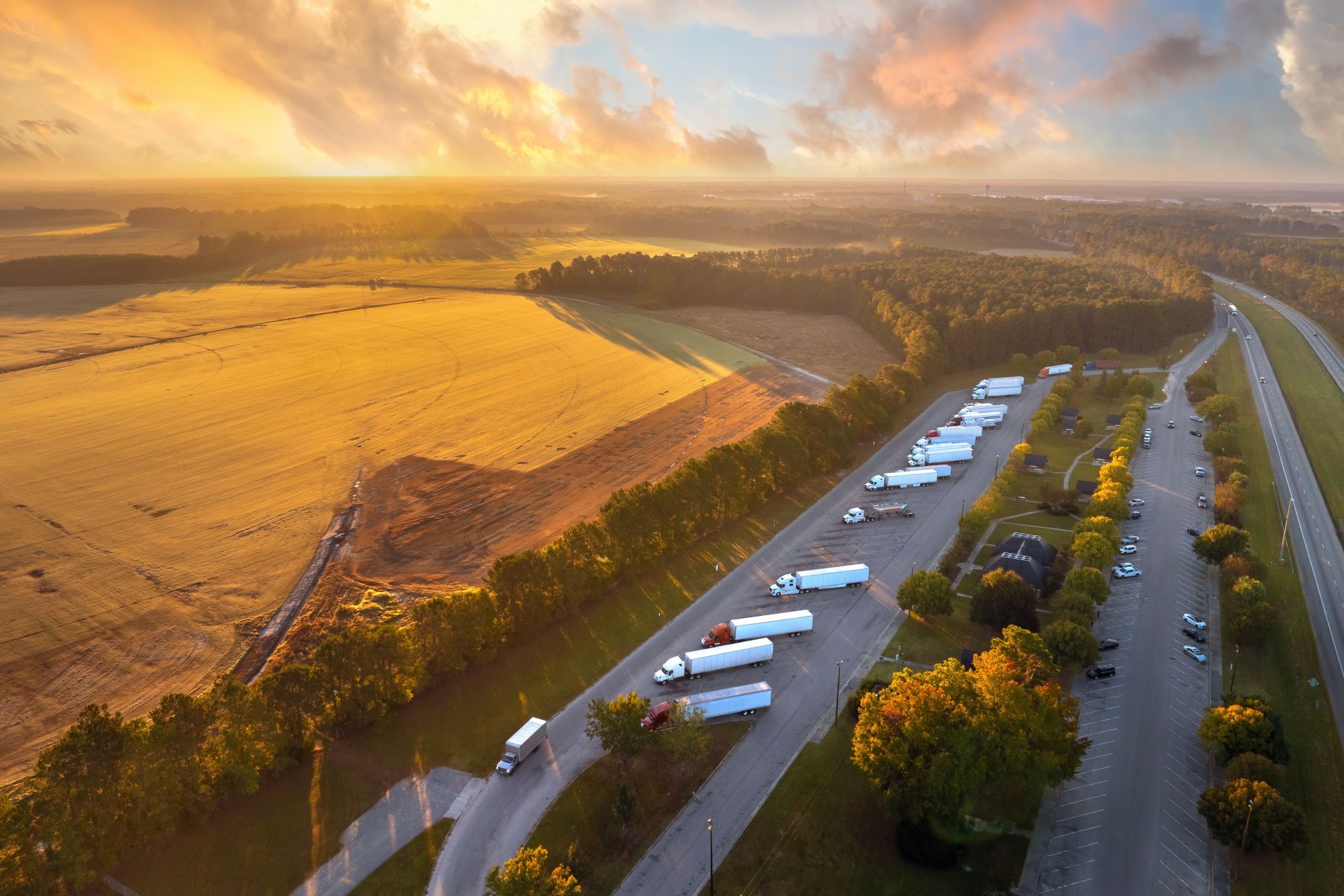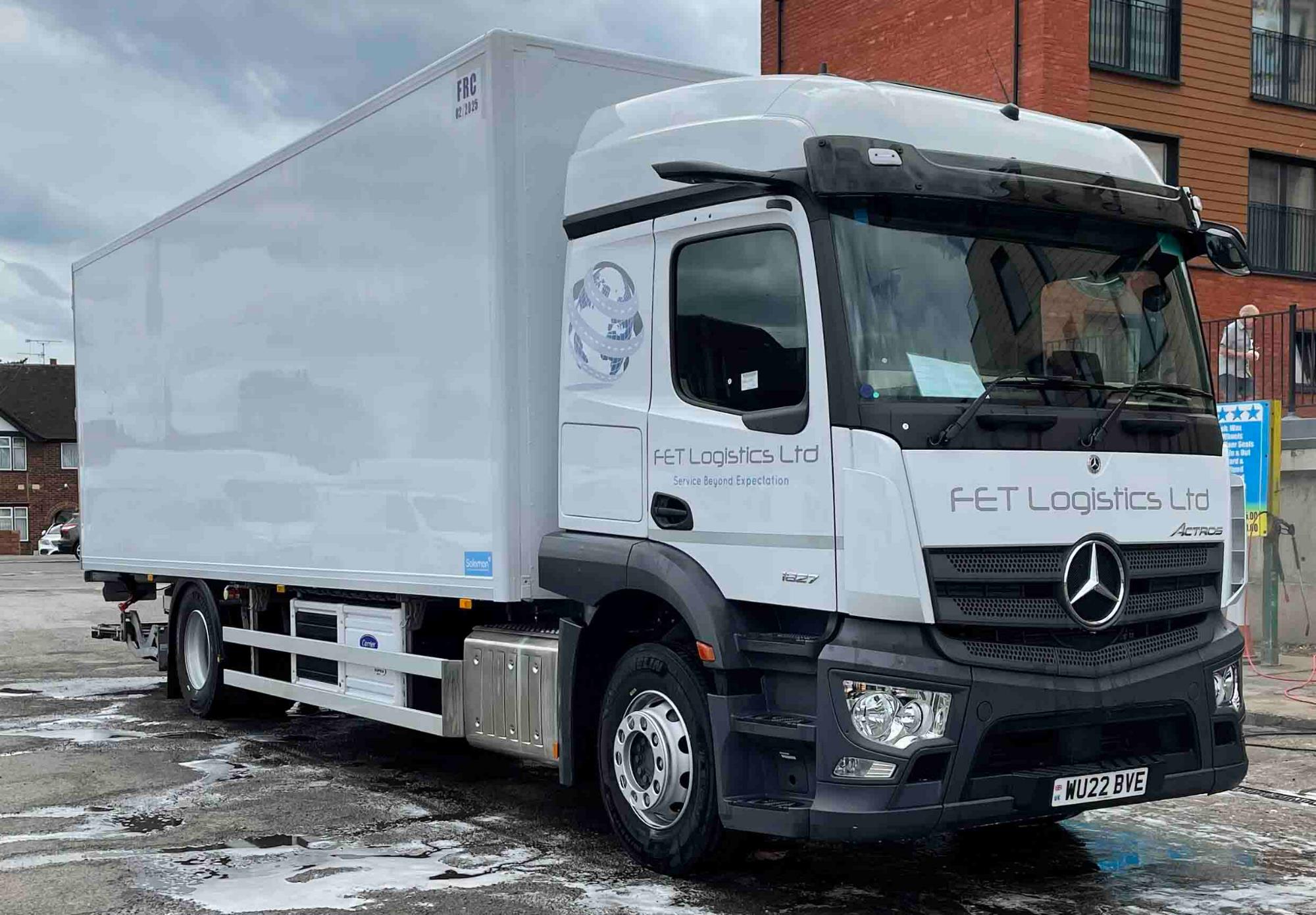
Guest
Wie wird man Lastwagenfahrer?
Erstellt: 26.09.2025
•
Aktualisiert: 26.09.2025
In ganz Europa war die Nachfrage nach Berufskraftfahrern noch nie so hoch wie heute. Im Vereinigten Königreich schätzt die Road Haulage Association, dass in den nächsten fünf Jahren 200.000 neue Lkw-Fahrer benötigt werden, um die Lieferketten am Laufen zu halten. Und die Situation ist in den meisten europäischen Ländern ähnlich. Nach Angaben der International Road Transport Union gab es 2024 europaweit 426.000 unbesetzte Fahrerstellen.
Doch dies bietet auch eine Chance. Wie [wir bereits untersucht haben] (https://snapacc.com/newsroom/is-logistics-a-new-alternative-to-further-education-for-school-leavers/), bietet das Transportgewerbe Schulabgängern, die eine Alternative zur Universität in Betracht ziehen, und Erwachsenen, die eine Umschulung anstreben, die Aussicht auf einen festen Arbeitsplatz. Der Beruf des Lkw-Fahrers ist ein Weg zu einem sicheren Einkommen und einer strukturierten Karriere.
Die Frage, die sich viele stellen, lautet: Wie wird man Lastkraftwagenfahrer? Die Antwort hängt nicht nur von der Ausbildung und dem Führerschein ab, sondern auch davon, was es bedeutet, einen Beruf auszuüben, der die europäische Wirtschaft am Laufen hält.
Wer kann Lastwagenfahrer werden?
Eine der Hauptattraktionen des Berufes des Kraftfahrers ist seine Zugänglichkeit. Sie brauchen weder einen Universitätsabschluss noch eine jahrelange Fachausbildung, um den Beruf zu ergreifen. Ein normaler Führerschein (Klasse B) ist alles, was Sie brauchen, bevor Sie sich beruflich qualifizieren können.
Das Mindestalter für die Ausbildung liegt sowohl im Vereinigten Königreich als auch in der EU bei 18 Jahren, was bedeutet, dass Schulabgänger direkt von einem Pkw-Führerschein in die Ausbildung zum Berufskraftfahrer wechseln können. Allerdings bevorzugen viele Unternehmen internationale Fahrer, die mindestens 21 Jahre alt sind, da sie im Fernverkehr eine zusätzliche Verantwortung tragen.
Auch die medizinische Eignung ist wichtig. Jeder Bewerber muss eine ärztliche Untersuchung bestehen, bevor er einen Lkw-Führerschein erhalten kann. Im Vereinigten Königreich umfasst dies eine Reihe von Tests, einschließlich Sehtests, Blutdruckmessungen und Untersuchungen auf Krankheiten wie Epilepsie, Herzerkrankungen oder Schlafapnoe.
In den europäischen Ländern gelten die gleichen EU-weiten medizinischen Standards, wobei regelmäßige Erneuerungen sicherstellen, dass die Fahrer während ihrer gesamten Laufbahn gesund bleiben.
Wie viel verdient ein Lastwagenfahrer?
Für viele Menschen, die einen Wechsel in den Beruf des Kraftfahrers in Erwägung ziehen, ist eine der wichtigsten Fragen: Wie viel verdienen Lkw-Fahrer?
Die Antwort variiert je nach Standort, Erfahrung und Art der Arbeit, aber in ganz Europa bietet der Beruf eine wettbewerbsfähige Bezahlung im Vergleich zu anderen Einstiegsjobs.
Ein neuer Fahrer im Vereinigten Königreich beginnt in der Regel mit etwa 27.000 Pfund pro Jahr. Für Fahrer, die im Fernverkehr tätig sind, insbesondere auf internationalen Strecken, kann das Gehalt auf bis zu 45.000 £ steigen - manchmal sogar noch mehr, wenn sie Spezial- oder Gefahrgut transportieren. die Spezial- oder Gefahrgut transportieren oder grenzüberschreitend tätig sind.
In [Spanien] (https://www.salaryexpert.com/salary/job/truck-driver/spain) sind die Gehälter tendenziell niedriger als im Vereinigten Königreich, in der Regel um die 36.600 €, obwohl große Logistikunternehmen in Großstädten mehr bieten können.
● [Polen] (https://pln.currencyrate.today/convert/amount-92400-to-eur.html) verzeichnete in den letzten Jahren eine starke Nachfrage nach Fahrern, aber die Löhne sind mit durchschnittlich 92 400 PLN (ca. 21 690 €) weiterhin bescheiden.
● [Rumänien] (https://www.erieri.com/salary/job/heavy-truck-driver/romania#:~:text=Salary%20Recap,and%20anonymous%20employees%20in%20Romania.) liegt am unteren Ende der Skala: Fahrer verdienen in der Regel 80.550 RON (16.000 €), obwohl internationale Speditionsverträge das Nettoeinkommen erheblich steigern können.
Natürlich ist das Gehalt nicht alles, was zählt. Viele Unternehmen bieten Überstundenvergütung, Essenszuschläge oder Prämien für das Erreichen von Lieferzielen. Und da die Nachfrage nach Fahrern keine Anzeichen einer Verlangsamung zeigt, bietet der Job auch ein Maß an Sicherheit, das nur wenige andere Einstiegsberufe bieten können.
Welchen Führerschein für Lastkraftwagen brauche ich?
Bevor Sie sich hinter das Steuer eines Lastwagens setzen können, brauchen Sie den richtigen Führerschein. Im Vereinigten Königreich bedeutet dies, dass Sie nicht nur einen normalen Pkw-Führerschein benötigen, sondern auch einen Führerschein für Lastkraftwagen (LGV) oder Schwerlastkraftwagen (HGV), wie es offiziell heißt. Die Begriffe werden oft synonym verwendet, aber beide umfassen die gleichen Kategorien von Berufskraftfahrern.
Manche beginnen mit einem Führerschein der Klasse C1, der für mittelgroße Fahrzeuge zwischen 3,5 und 7,5 Tonnen gilt und häufig für kleinere Lieferwagen verwendet wird.
Die meisten angehenden Lkw-Fahrer machen jedoch direkt den Führerschein der Klasse C, der manchmal auch als Lkw-Führerschein der Klasse 2 bezeichnet wird. Damit dürfen Sie starre Fahrzeuge über 7,5 Tonnen fahren. Für diejenigen, die zu Sattelschleppern aufsteigen wollen - die größeren Fahrzeuge, die häufig im Fernverkehr und im internationalen Verkehr eingesetzt werden - ist der Führerschein der Klasse CE (Klasse 1) erforderlich.
Neben diesen Qualifikationen gibt es das Zertifikat für die berufliche Befähigung von Fahrern (CPC), das sowohl im Vereinigten Königreich als auch in der EU gesetzlich vorgeschrieben ist. Dieses Zertifikat umfasst eine Mischung aus Erstausbildung und regelmäßigen Auffrischungen, um die Fahrer in Bezug auf Sicherheit, Vorschriften und Fähigkeiten im Straßenverkehr auf dem neuesten Stand zu halten.
Dieses System spiegelt den EU-weiten Zulassungsrahmen wider. Die Hauptunterschiede zwischen den Ländern liegen bei den Ausbildungsanbietern, den Kosten und in einigen Ländern bei der Verfügbarkeit von Prüfungsplätzen.

Wie Sie Ihren HGV-Führerschein erwerben
Der Erwerb des Lkw-Führerscheins ist der erste Schritt zum Berufskraftfahrer. Im Vereinigten Königreich können Sie den Prozess beginnen, sobald Sie einen normalen Führerschein der Klasse B besitzen. Danach beantragen Sie einen vorläufigen Lkw-Führerschein, mit dem Sie eine Ausbildung in großen Lastkraftwagen beginnen können.
Die Ausbildung selbst kombiniert theoretische und praktische Elemente: Unterrichtseinheiten über Verkehrssicherheit und Vorschriften, gefolgt von beaufsichtigten Fahrten mit schweren Fahrzeugen. Die Kandidaten müssen auch Module für das Zertifikat für die berufliche Befähigung des Fahrers (CPC) absolvieren, das sicherstellt, dass die Fahrer nicht nur in der Lage sind, die Fahrzeuge sicher zu führen, sondern auch die täglichen Anforderungen des Transportwesens zu bewältigen.
Wie viel kostet es, Lastwagenfahrer zu werden?
Eine der häufigsten Fragen, die sich jeder stellt, der diesen Beruf in Betracht zieht, ist die nach den Kosten für die Ausbildung zum Lkw-Fahrer. Im Vereinigten Königreich variieren die Preise je nach Anbieter, Standort und je nachdem, ob Sie eine Ausbildung für einen Führerschein der Kategorie C oder die fortgeschrittenere Kategorie CE absolvieren. Im Durchschnitt müssen Fahranfänger mit Kosten zwischen 2.000 und 3.500 Pfund rechnen, um die ärztliche Untersuchung, die Gebühren für den vorläufigen Führerschein, die Theorieprüfung, die praktische Ausbildung, die CPC-Module und die abschließende Fahrprüfung abzudecken. Einige Unternehmen, vor allem größere Logistikunternehmen, bieten Programme zur Subventionierung oder vollständigen Finanzierung der Ausbildung als Gegenleistung für eine Arbeitsverpflichtung an, was den Zugang zu diesem Weg erleichtert.
Anderswo in Europa sind die Zahlen nicht viel anders. In Spanien liegen die Kosten für eine vollständige Ausbildung und Zertifizierung im Allgemeinen zwischen 2 000 und 3 000 Euro. In Polen sind die Kosten mit durchschnittlich 1.500 bis 2.500 Euro niedriger. Rumänien gehört zu den Ländern mit den niedrigsten Ausbildungskosten in Europa. Viele Bewerber zahlen zwischen 1.000 und 1.800 Euro für ihre Qualifikation, wobei die Einstiegsgehälter diese niedrigere Eintrittsschwelle widerspiegeln.
Wie lange dauert es, ein Lastwagenfahrer zu werden?
Wie lange es dauert, sich als Lkw-Fahrer zu qualifizieren, hängt davon ab, wo Sie Ihre Ausbildung absolvieren, welche Art von Führerschein Sie anstreben und wie schnell Sie sich Prüfungstermine sichern können. Im Vereinigten Königreich schließen die meisten Teilnehmer ihre Ausbildung und Prüfung innerhalb von zwei bis vier Monaten ab. Einige Intensivkurse komprimieren den Prozess auf wenige Wochen, obwohl viele Fahrer feststellen, dass sie durch die Aufteilung der Lektionen das Gelernte besser aufnehmen können.
In Spanien und Polen ist das Verfahren ähnlich, obwohl längere Wartelisten für Prüfungsplätze die Zeitspanne verlängern können. In Polen hat die hohe Nachfrage nach Berufskraftfahrern zu Engpässen in den Ausbildungszentren geführt, so dass manche Kandidaten mehrere Monate auf ihre praktische Prüfung warten müssen. Rumänien hat einen der schnellsten Wege, wo Ausbildung und Prüfung oft innerhalb von acht bis zwölf Wochen abgeschlossen sind.
Und das Lernen hört nicht auf, sobald Sie Ihren Führerschein haben. Jeder Berufskraftfahrer muss alle fünf Jahre 35 Stunden CPC-Schulung absolvieren, um seine Fähigkeiten auf dem neuesten Stand zu halten und sicherzustellen, dass er für die neuesten Vorschriften und Sicherheitsstandards gerüstet ist.
Wie lange darf ein Lkw-Fahrer fahren?
Sobald Sie qualifiziert sind, gelten strenge Höchstgrenzen für die Zeit, die Sie hinter dem Lenkrad verbringen dürfen. Diese Grenzen sollen sowohl die Fahrer als auch andere Verkehrsteilnehmer schützen, indem sie die Ermüdung verringern.
Im Vereinigten Königreich und in der EU gelten die gleichen Regeln. Fahrer dürfen [maximal neun Stunden pro Tag] (https://www.gov.uk/drivers-hours/eu-rules#:~:text=9%20hours%20in%20a%20day,in%20any%202%20consecutive%20weeks) am Steuer verbringen, zweimal pro Woche kann diese Zeit auf zehn Stunden verlängert werden. Die wöchentliche Höchstdauer liegt bei 56 Stunden, wobei in zwei aufeinanderfolgenden Wochen nicht mehr als 90 Stunden gefahren werden dürfen.
Ein Fahrer muss außerdem nach 4,5 Stunden Fahrzeit eine Pause von mindestens 45 Minuten einlegen. Außerdem haben sie Anspruch auf tägliche und wöchentliche Ruhezeiten, um sich vor der Rückkehr zur Arbeit zu erholen.
Diese Vorschriften werden streng überwacht, und in den Fahrzeugen sind Fahrtenschreiber eingebaut, die die Stunden aufzeichnen und die Einhaltung der Vorschriften sicherstellen. Für diejenigen, die auf Langstrecken arbeiten, wie z. B. spanische Fahrer, die die iberische Halbinsel befahren, oder polnische Spediteure, die Güter über die östlichen Grenzen der EU transportieren, bestimmen diese Grenzwerte den Rhythmus der Arbeit. Sie bestimmen, wann und wo die Fahrer anhalten und machen den Zugang zu sicheren Rastplätzen zu einem wichtigen Bestandteil des Arbeitstages.
Erste Schritte als Lastwagenfahrer
Beim Beruf des Lastwagenfahrers geht es nicht nur darum, Prüfungen zu bestehen. Es geht darum, eine Rolle zu übernehmen, die mit echter Verantwortung, aber auch mit langfristigen Chancen verbunden ist. Mit dem richtigen Führerschein, der richtigen Ausbildung und der Entschlossenheit, das Leben auf der Straße zu meistern, ist dies eine Karriere, die sowohl Stabilität als auch Aufstiegschancen bieten kann.
Wir bei SNAP wissen, wie diese Fahrten aussehen. Deshalb arbeiten wir mit Fuhrparks und Fahrern in ganz Europa zusammen, um sie sicherer, einfacher und bequemer zu machen - von sicheren Parkplätzen und besseren Sozialeinrichtungen bis hin zu intelligenten digitalen Tools, die Zeit und Stress sparen. Ganz gleich, ob Sie gerade erst anfangen oder schon seit Jahren fahren, wir unterstützen Sie bei jedem Kilometer, den Sie zurücklegen.
Laden Sie noch heute die intruck app herunter, um zuverlässige Parkplätze, Einrichtungen und Dienstleistungen zu finden, egal wohin Ihre Route Sie führt.



